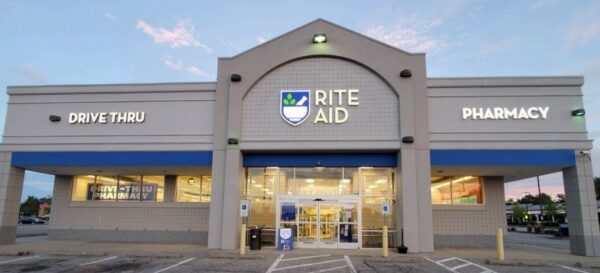It’s not an easy time to be a retail pharmacy chain. This is especially true for Rite Aid, which filed for Chapter 11 bankruptcy protection in New Jersey on Sunday.
In order for the company to get back on its feet in the next few years, experts say it will have to start acting more like its competitors, such as Walgreens and CVS, by leaning more into care delivery, forging strong payer partnerships, and improving its digital offerings.

With the Rise of AI, What IP Disputes in Healthcare Are Likely to Emerge?
Munck Wilson Mandala Partner Greg Howison shared his perspective on some of the legal ramifications around AI, IP, connected devices and the data they generate, in response to emailed questions.
“It is very difficult for traditional retail pharmacies to stand still in the current environment. You need to determine if you want to shift towards an online model, become a payer, or become a provider. In fact, many retail pharmacies finding success right now have become a combination of all three,” said Ash Shehata, KPMG’s national leader for healthcare and life sciences.
Shehata also noted that Americans are living in an increasingly digital world. In the past, pharmacies aspired to be on every block throughout a community. Now, many are questioning whether that is meaningful when people get their groceries and medicine delivered right to their doorstep, he pointed out.
Nathan Ray, partner at consulting firm West Monroe, echoed Shehata’s comments, saying that keeping a close eye on your competition has historically been the key to success in the retail pharmacy space.
“Stay close to your competitors — try to do most of the same things. I think Rite Aid has not been able to invest in exactly the same way as their peers. That doesn’t necessarily mean buying pricey acquisitions or developing exactly the same health services footprint, but it does mean being able to partner to deliver similar things or finding a different way to compete — maybe finding a foothold in different geographies or different approaches to their consumers,” he explained.
Rite Aid is one of the largest pharmacy chains in the U.S., with more than 2,000 pharmacies in 17 states. Rumors of its bankruptcy filing emerged in late summer amid decreasing sales, billions of dollars in debt and more than a thousand lawsuits claiming the chain filled illegal prescriptions for opioids.
According to the company’s most recent financial report, filed in June, Rite Aid had $3.3 billion in debt but only $135.5 million in cash on hand.
Sunday’s bankruptcy filing means that Rite Aid will remain in business while restructuring its finances through a court-supervised process. The company raised $3.45 billion in financing from lenders to help support this restructuring, it said in a statement.
Rite Aid said that its restructuring plan involves closing “underperforming stores”. The chain did not respond to MedCity News’ inquiry about how many locations it plans to shutter.
The chain also said the plan includes a potential deal to sell Elixir, its pharmacy benefit manager, to MedImpact. Rite Aid bought Elixir for $2 billion in 2015. For the deal to go through, it would have to be approved by a bankruptcy judge.
In addition, Rite Aid appointed a new CEO — Jeff Stein, founder of financial advisory firm Stein Advisors — to lead the company amid its restructuring process.
Photo: Rite Aid
Editor’s Note: The story has been updated with a new photo.
















